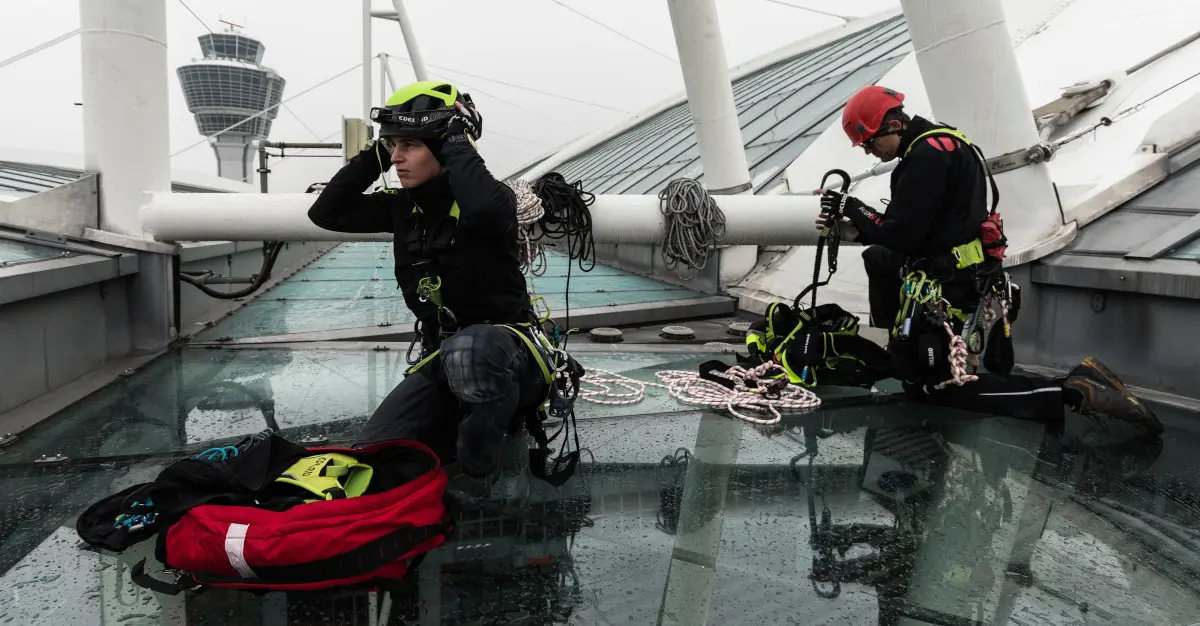
Disasters can strike anywhere, anytime. Whether you’re scaling a mountain peak or working on a high-rise construction site, being prepared for an emergency rescue situation is crucial. This article delves into the different types of rescue operations, who performs them, and how to ensure a faster, safer outcome.
Self-Rescue: Taking Control in an Emergency
Self-rescue, the act of freeing yourself from a perilous situation, should always be the first priority if possible. This could involve carrying basic tools like a knife or multi-tool to cut yourself free from entanglement or using a personal locator beacon (PLB) to signal for help.
In certain high-risk professions, like rope access technicians or mountain climbers, self-rescue training is essential. Climbers utilize rope systems to ascend and descend, and if one team member falls into a crevasse, the others are equipped to secure and potentially even assist them in climbing back up the rope. Similarly, in industrial settings, regulations from organizations like the Global Wind Organization (GWO) mandate self-rescue techniques for wind turbine technicians in case of falls from ladders or platforms.
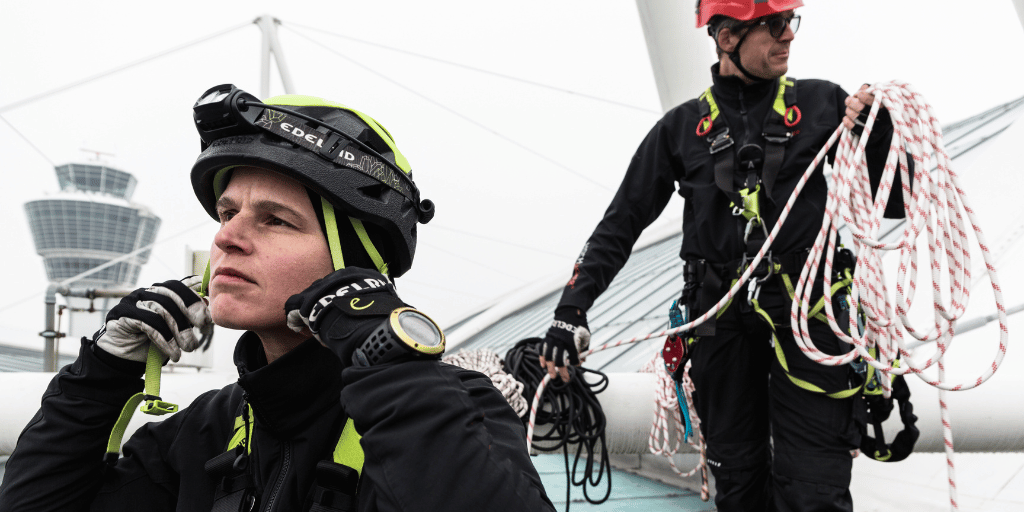
When Self-Rescue Isn’t Enough: Calling in the Rescue Team
When self-rescue or assistance from immediate team members isn’t feasible, a technical rescue by specialized teams becomes necessary. These highly trained professionals possess the expertise and equipment to handle complex situations safely.
Types of Technical Rescue Teams:
- Height Rescue Teams: Often part of a fire department, these teams specialize in rescuing people from elevated positions like rooftops, cranes, or communication towers. They utilize specialized equipment like ropes, harnesses, and rigging systems to access victims and safely bring them back to ground.
- Mountain Rescue Teams: Comprised of volunteers or professional rescuers with extensive mountaineering experience, these teams operate in rugged terrain like mountains, cliffs, and glaciers. They employ advanced techniques like ice rescue, avalanche response, and high-angle rope systems to navigate treacherous environments and extract casualties.
When to Call for a Technical Rescue:
- Danger to the Rescuer: If attempting a self-rescue or rescue by bystanders puts them at risk of injury or death, a professional rescue team should be called immediately.
- Limited Equipment: When the available equipment is insufficient to safely perform the rescue, contacting a specialized team with the necessary tools and expertise is crucial.
- Remote Locations: In situations where an ambulance cannot reach the accident site due to lack of roads or trails, a technical rescue team with air or land transportation capabilities may be needed.
Beyond Self-Rescue and Technical Teams: Unforeseen Emergencies
Technical rescue teams aren’t limited to industrial accidents or mountaineering mishaps. Unexpected events in urban settings can also necessitate specialized intervention. For instance, cable car malfunctions might require the expertise of height rescue specialists to evacuate passengers safely.
Environmental disasters, like floods or wildfires, can also necessitate air rescue operations to evacuate people trapped in inaccessible areas. In such scenarios, rescuers not only carry their own equipment but also harnesses and other gear to secure those being rescued.
The Importance of Quality Rescue Equipment
The field of rescue encompasses an incredibly diverse range of situations. EDELRID recognizes the importance of collaboration with various rescue organizations. This direct contact allows them to develop high-performance personal protective equipment (PPE) specifically designed to facilitate fast and safe rescues across a wide spectrum of scenarios. Their commitment to innovation ensures that rescue professionals have the tools they need to perform their critical duties effectively.
Being prepared for an emergency rescue situation can significantly increase your chances of a positive outcome. Whether it’s carrying basic self-rescue tools or understanding when to call for specialized help, taking proactive measures can be the difference between life and death. By familiarizing yourself with different rescue methods and the role of various rescue teams, you’ll be better equipped to handle unexpected events, no matter where you are.
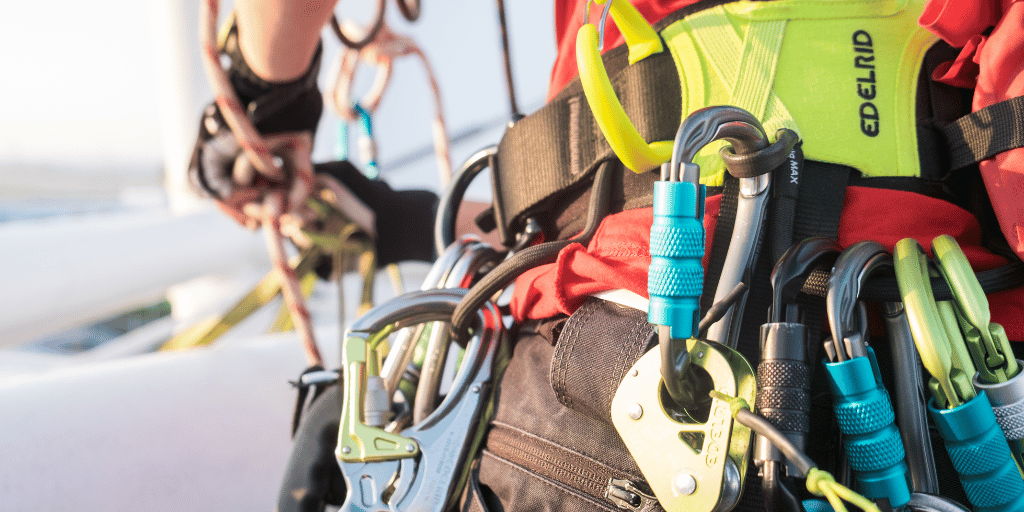
Safe and Easy Rescues at Height: Lifting Devices for Industrial Settings
Staying Prepared for the Unexpected:
Working at heights, like in warehouses or wind turbines, requires readily available rescue gear that’s both user-friendly and dependable. Even with regular practice drills, rescue situations can be unpredictable. That’s why equipment should prioritize simplicity for rescuers during critical moments.
Lifting Devices: A Versatile Solution:
Enter rescue lifting devices, following the EN 1496 standard. These tools excel at swiftly lifting injured personnel, allowing removal from fall arrest systems and a safe descent using the same device.
Built-in Safety:
These devices boast a centrifugal brake, automatically slowing descents without manual intervention or rope manipulation. This braking system makes them suitable for evacuation scenarios as well. If a rapid evacuation from a high work area is necessary, everyone can descend safely with the brake controlling their descent speed.
Enhanced Functionality for Diverse Rescues:
Some models offer an extended lifting function, enabling rescues from confined spaces like shafts or containers. These advanced devices come equipped with lever arms or the option of using a cordless screwdriver for motorized lifting.
This rewrite emphasizes the benefits of rescue lifting devices for industrial settings, focusing on:
- User-friendliness and safety for rescuers.
- Versatility for various rescue situations.
- Built-in safety features like centrifugal brakes for controlled descents.
- Expanded functionalities for complex rescues.
-
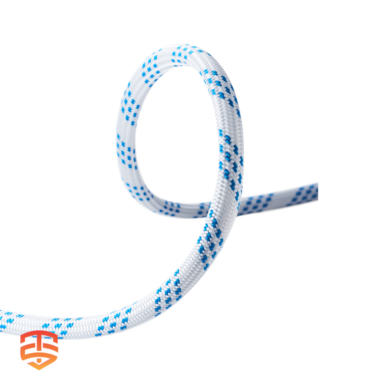 Edelrid Prostatic SyncTec Static Rope | 10,5 – 11,0 mm€ 106,00 – € 438,00 Ex VAT
Edelrid Prostatic SyncTec Static Rope | 10,5 – 11,0 mm€ 106,00 – € 438,00 Ex VAT -
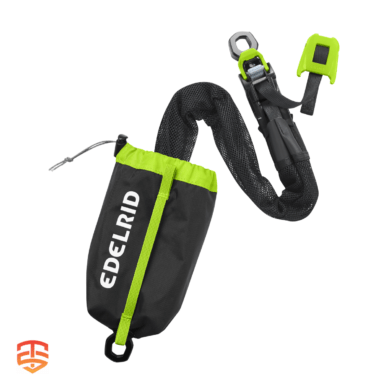 Edelrid KAA Rescue Haul System€ 125,00 – € 146,00 Ex VAT
Edelrid KAA Rescue Haul System€ 125,00 – € 146,00 Ex VAT -
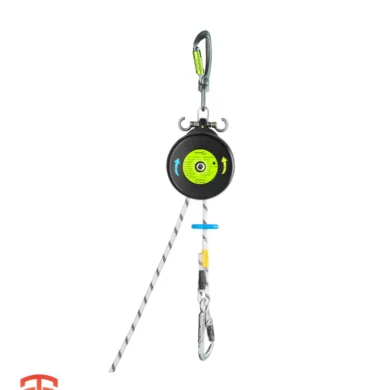 Edelrid Safe Descent Pro | Descent & Rescue device€ 1.131,00 – € 1.798,00 Ex VAT
Edelrid Safe Descent Pro | Descent & Rescue device€ 1.131,00 – € 1.798,00 Ex VAT
When Standard Gear Isn’t Enough: Height Rescue Teams Take Over
While fire departments are well-equipped for many emergencies, standard tools might not suffice for technical rescues from heights or depths. Fall protection sets, commonly used for securing firefighters on roofs, aren’t designed for complex rope rescues.
This is where specially trained height rescue teams come in. These elite firefighters possess the expertise and specialized equipment to handle intricate rescues from precarious locations.
Equipping for Every Eventuality:
Height rescue teams carry a diverse arsenal to tackle a wide range of scenarios. This equipment list might include:
- Stretchers: Essential for safely transporting injured personnel.
- Block and tackles: These provide mechanical advantage for lifting or lowering people.
- Ropeway construction gear: Allows for the creation of temporary rope systems for rappelling, ascending, or hauling victims to safety.
- Cut-resistant ropes: High-strength ropes with additional protection against abrasions, ensuring rescuer and victim safety during maneuvers.
By utilizing this specialized equipment and their rigorous training, height rescue teams are prepared to bring people back from dangerous situations, be it from a towering wind turbine or a confined trench.
-
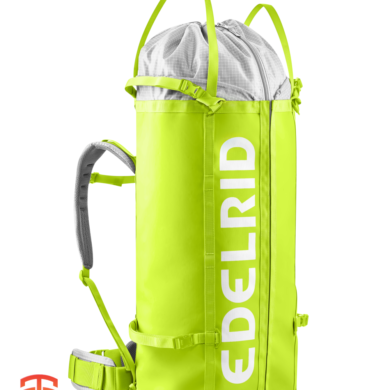 Edelrid KURT HAULBAG 55€ 103,00 Ex VAT
Edelrid KURT HAULBAG 55€ 103,00 Ex VAT -
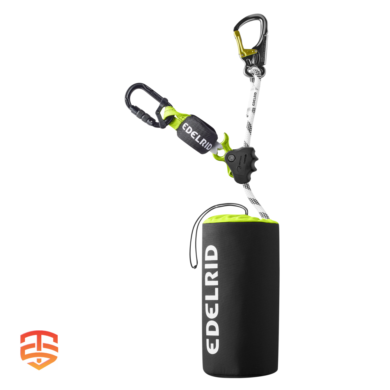 Edelrid OMBILIX 140 | Guided fall arrester€ 112,00 – € 147,00 Ex VAT
Edelrid OMBILIX 140 | Guided fall arrester€ 112,00 – € 147,00 Ex VAT -
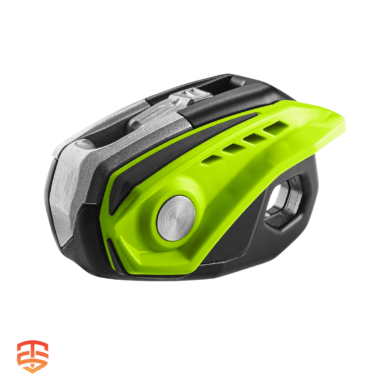 Edelrid MEGAWATT Descender€ 139,00 Ex VAT
Edelrid MEGAWATT Descender€ 139,00 Ex VAT
Gearing Up for Sky High Rescues: Essential PPE for Air Rescue Teams
Air rescues involve a unique set of challenges. Here’s a breakdown of the personal protective equipment (PPE) crucial for these daring operations:
Winch Operators Secured Above:
The helicopter crew lowering rescuers relies on fall protection equipment to ensure their own safety. This safeguards them against accidental falls while operating the winch.
Rescuer Mobility in the Sky:
Rescuers themselves wear specialized air rescue harnesses. Designed for lightness and comfort, these harnesses allow for easy connection to the helicopter’s winch. This maximizes flexibility during complex rescues where agility is paramount.
Safeguarding the Rescued:
Once lowered, rescuers may employ rescue loops or triangles (meeting the EN 1498 standard) to securely lift injured individuals. These loops provide a safe and efficient means of transferring victims to the helicopter.
Prepared for the Unexpected:
Air rescues can be unpredictable. In situations requiring a quick rope cut, rescuers come equipped with specialized cutting pliers. Additionally, a specifically designed lanyard allows for rapid attachment of the injured person to the rescuer, facilitating a swift ascent back to the helicopter.
By utilizing this combination of PPE, air rescue teams can operate safely and efficiently, ensuring successful rescues even in the most demanding aerial situations.
-
 Edelrid CUPID STEEL Connector Ring€ 26,00 Ex VAT
Edelrid CUPID STEEL Connector Ring€ 26,00 Ex VAT -
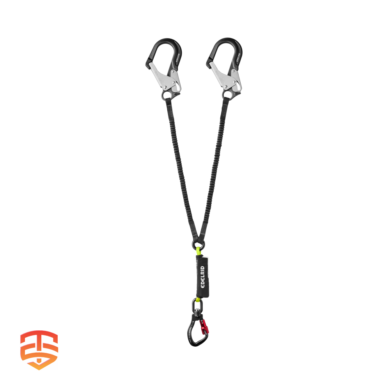 Edelrid Shockstop-Y 140 Giant Ansi€ 186,00 Ex VAT
Edelrid Shockstop-Y 140 Giant Ansi€ 186,00 Ex VAT -
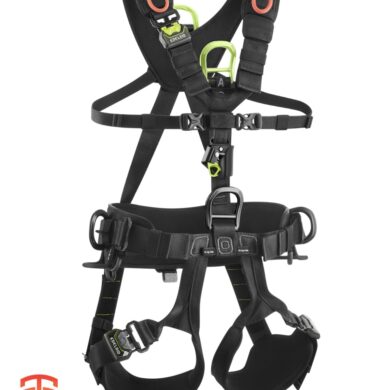 Edelrid Vertic Triple Lock | Full Body Harness€ 270,00 Ex VAT
Edelrid Vertic Triple Lock | Full Body Harness€ 270,00 Ex VAT
When Helicopters Can’t Reach: The Tools of Terrestrial Mountain Rescue
Mountain rescues don’t always involve helicopters. When airlifts are impossible due to weather or helicopter availability, specially trained terrestrial mountain rescue teams take charge. Their mission: navigate challenging terrain to reach and secure injured individuals.
Reliable Tools for Demanding Terrain:
These rescuers rely on a robust set of equipment designed for efficiency and safety in harsh conditions. Here are key components:
- Enhanced PPE: Mountain rescue teams require extended personal protective equipment (PPE) to navigate the treacherous environment themselves.
- Rescue Systems: Durable rescue systems built around Dyneema® and static ropes are vital for maneuvering victims and securing them for transport.
- Redundant Anchors: For critical situations involving multiple casualties, establishing redundant anchor points becomes essential. These extra securements provide a safety net for both rescuers and victims during complex operations.
By wielding this specialized equipment and their extensive training, terrestrial mountain rescue teams can reach those in need, even in the most remote and unforgiving landscapes.
-
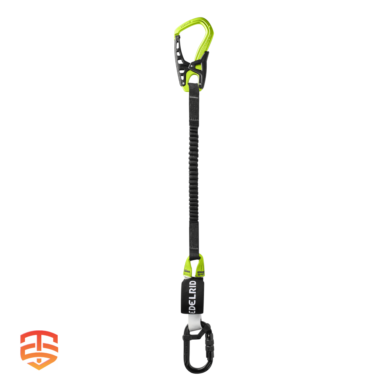 Edelrid Shockstop-Lite-I 140 One Touch€ 66,00 Ex VAT
Edelrid Shockstop-Lite-I 140 One Touch€ 66,00 Ex VAT -
 Edelrid MEGAWATT Descender€ 139,00 Ex VAT
Edelrid MEGAWATT Descender€ 139,00 Ex VAT -
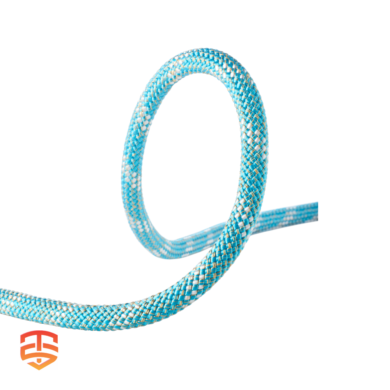 Edelrid Interstatic Protect 11,0 mm – Static rope€ 154,00 – € 613,00 Ex VAT
Edelrid Interstatic Protect 11,0 mm – Static rope€ 154,00 – € 613,00 Ex VAT
Ascend to New Heights: Expert Insights on Ropes Course Technology
Ropes courses offer exhilarating challenges and unforgettable experiences. This article explores the core technology behind them. But to truly scale the heights of knowledge, check out our additional resources featuring expert opinions on the latest advancements and best practices in ropes course design and operation.
- Aerial Safety: Exploring High Ropes Course Belay Systems
- Safe Ropes Course Adventures
- Harnessing Innovation: Next-Generation PPE for Adventure Parks
- Why Keyed Smart Belay Systems Reduce Costs
- Exploring High Ropes Course Belay Systems
- Advanced Rescue Devices in Aerial Adventure Courses
- Top Picks for Best Ropes Course Equipment Season 2023
- Smart Belay for Authentic Climbing Experience
- Edelrid Novelties: Highlights High work and tree care
- Using LockD Clips with Vertical Auto Belays
- Considerations when designing ropes courses and adventure parks?
- Choosing the right Belay System
- Continuous Belay for Ropes Courses
- Ropes Course Rescue Innovations
-
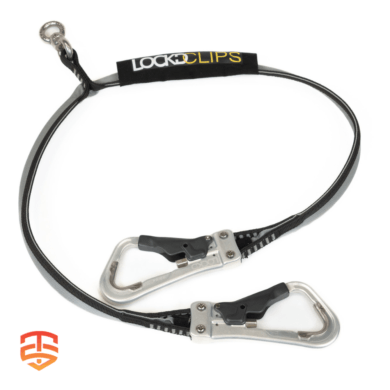 LockD Clips Swivel | Continuous Self-Belay€ 371,00 Ex VAT
LockD Clips Swivel | Continuous Self-Belay€ 371,00 Ex VAT -
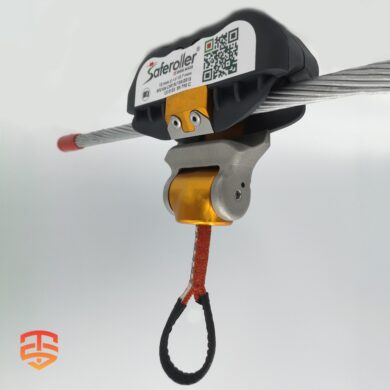 Saferoller Trolley V3 (PPE)€ 245,00 – € 259,00 Ex VAT
Saferoller Trolley V3 (PPE)€ 245,00 – € 259,00 Ex VAT -
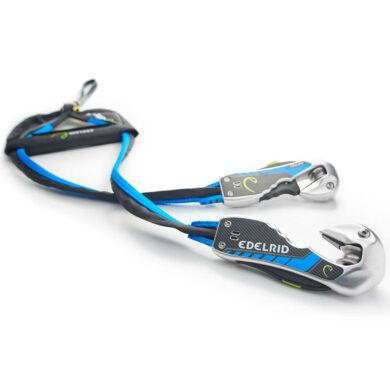 Edelrid Smart Belay X | Magnetic Locking Mechanism€ 420,00 – € 485,00 Ex VAT
Edelrid Smart Belay X | Magnetic Locking Mechanism€ 420,00 – € 485,00 Ex VAT







